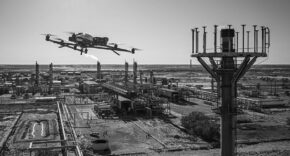A quiet but dangerous crisis is unfolding across the United States. As demand for artificial intelligence, cryptocurrency mining, and cloud-based services grows, so too does the need for data centers. These massive buildings, filled with thousands of power-hungry servers, are sprouting up across the country. But as their numbers and energy use grow rapidly, experts and federal regulators are warning that they may be pushing the nation’s aging power grid to a breaking point.
Recent close calls with regional blackouts have exposed serious flaws in the way data centers interact with the electric grid. Without quick and coordinated action, these problems could grow into full-scale disasters.
A Sudden Shutdown in Data Center Alley
One of the most alarming incidents occurred on July 10, 2024, in Northern Virginia. In a region known as “Data Center Alley,” where more than 200 data centers operate, 60 of them suddenly disconnected from the grid. These facilities are operated by some of the largest tech companies in the world, including Amazon, Google, and Microsoft. The shutdown was not caused by a major storm or a cyberattack. It was triggered by a safety system that automatically switches data centers to backup generators whenever there is a voltage disturbance in the grid.
That day, a piece of equipment failed on Dominion Energy’s Ox-Possum 230-kilovolt line near Fairfax, Virginia. This small issue caused a minor fluctuation in voltage. In response, the 60 data centers switched off the grid and onto their generators. What was supposed to be a simple protective measure created a massive surge of excess electricity. With nowhere for the power to go, grid operator PJM and Dominion Energy had to act immediately to scale back power generation.
They succeeded in preventing a full-scale blackout, but just barely. Federal regulators later said the incident could have triggered “cascading power outages for an entire region.” John Moura, Director of Reliability Assessment and System Analysis for the North American Electric Reliability Corporation (NERC), said, “As these data centers get bigger and consume more energy, the grid is not designed to withstand the loss of 1,500-megawatt data centers. At some level, it becomes too large to withstand unless more grid resources are added.”
Grid Operators Struggling to Keep Up
Power grids in the United States were built to handle unexpected shutdowns of power plants. They were not designed to handle large groups of electricity users dropping offline all at once. But that is exactly what is happening as data centers and crypto mining facilities expand. Their behavior is adding a new level of unpredictability to the already difficult job of balancing electricity supply and demand.
According to Alison Silverstein, a former senior adviser to the chairman of the Federal Energy Regulatory Commission (FERC), “What it tells us is that the behavior of data centers has the potential to cause cascading power outages for an entire region.”
The incident in Virginia was not isolated. NERC has seen a growing number of near-miss events involving data centers and other large energy users. In Texas alone, there have been more than 30 such events since 2020. In one case, a failed transformer led nearly 400 data centers, crypto mining operations, and oil facilities to disconnect from the grid. This caused an electricity surplus of 1,700 megawatts, or about 5 percent of the state’s total energy demand.
The rapid increase in these events is forcing grid operators to rethink their planning. NERC has launched a task force to study the risks posed by mass disconnections. In a December 2024 report, NERC warned that nearly the entire country could face higher risks of energy shortfalls over the next five to ten years.
Data Centers Defend Their Safety Measures
While utilities and grid operators are trying to manage the rising risks, data center operators are defending their decisions to disconnect during voltage dips. Their main concern is protecting their highly sensitive electronic equipment from damage.
In response to the July incident, Aaron Tinjum, vice president of energy for the Data Center Coalition, said, “To be clear, data centers did not cause the referenced fault in Virginia. They responded to protect equipment and maintain continuity of operations that are essential to our modern economy and daily lives.”
Grid operators in states like Texas have proposed requiring data centers and crypto miners to stay connected to the grid during minor voltage disturbances, a practice known as “riding through.” But the industry has strongly pushed back. The Data Center Coalition, whose members include Amazon, Google, and Meta, argued in 2024 that, “Data center hardware and power supplies, similar to other electronics, are very sensitive to power supply stability. Deviating from this range will deteriorate the optimal performance, reduce longevity, or damage the components beyond repair.”
Because of this opposition, the Electric Reliability Council of Texas (ERCOT) withdrew its proposal to enforce ride-through rules.
Delays in Grid Upgrades Worsen the Problem
Another major challenge is that grid improvements are not keeping pace with the growth of data center power needs. In 2021, FERC ordered the country’s main regional grid operators to install dynamic line rating systems by July 2025. These systems would allow operators to monitor transmission line conditions in real time and safely increase the amount of electricity they carry, sometimes by as much as 40 percent.
However, every one of the six major grid operators has said they will miss the deadline. Some, like ISO New England, may need until 2028. Others cite software shortages or say the project is simply too large to complete on time. For example, the California Independent System Operator said, “Completing this effort by July 2025 is too ambitious for us and our transmission owners.”
These delays are adding to the pressure on an already overburdened power grid. They also make it harder for new data centers to connect to the grid. In Virginia, data centers can already wait up to seven years for a connection. With more delays in grid upgrades, that wait could grow even longer.
Some companies are now turning to private power solutions. Amazon Web Services and Microsoft have signed deals with nuclear power plants to secure electricity outside of the traditional grid. Others are building their own natural gas turbines on-site. For example, a Texas data center recently announced plans to build a 360-megawatt gas-fired plant to power its operations.
Explosive Growth of AI Raises the Stakes
The situation is becoming even more urgent because of the explosion in artificial intelligence technology. AI applications use far more electricity than traditional computing tasks. According to the Electric Power Research Institute (EPRI), a simple Google search may use just one-third of a watt. But a generative AI query could use as much as 9 watts.
Depending on how fast AI technology spreads, U.S. data center energy demand could grow from about 4 percent of total electricity output today to over 9 percent by 2030. EPRI estimates the country may need to add 20,000 to 100,000 megawatts of new power generation capacity to meet this demand. For comparison, the total capacity of all 94 U.S. nuclear reactors is around 100,000 megawatts.
Arshad Mansoor, CEO of EPRI, said, “Nobody has a good understanding of how generative AI will impact every aspect of the society. And so anything we say now most likely will be wrong in six months.”
Kushal Patel of Energy & Environmental Economics said, “There’s still a ton of uncertainty, particularly concerning the highest forecasts. It’s probably not going to be more certain in the future.”
Looking for Solutions
Experts say the only way to avoid grid failures is through coordinated planning and investment. Utilities can increase their use of advanced transmission cables and install dynamic line rating sensors. These tools allow more power to move safely through existing infrastructure.
Data centers could also help by syncing AI workloads to times when renewable energy is most available. EPRI has called for large AI users to help fund clean energy solutions such as small modular nuclear reactors, long-duration grid batteries, and carbon capture systems.
Some regulators and lawmakers are even considering placing limits on future data center construction or requiring companies to pay for infrastructure upgrades in advance. These ideas are gaining traction as more communities worry that rising electricity demand will lead to higher utility bills for everyone.
Jim Simonelli of Schneider Electric said, “One thing that doesn’t exist yet for the data center industry is how to be grid-friendly.”
Until that happens, the power grid will remain vulnerable to sudden shocks. And with data centers multiplying and AI spreading fast, the stakes are only getting higher.
As Phill Lawson-Shanks of Aligned Data Centers put it, “There’s almost an arms race. They are saying, ‘OK, I have no idea how much, but I know I need power. I need to build as much as I can.’”
FAM Editor: Trump has almost a trillion dollars worth of investment in data centers coming in from the outside.





